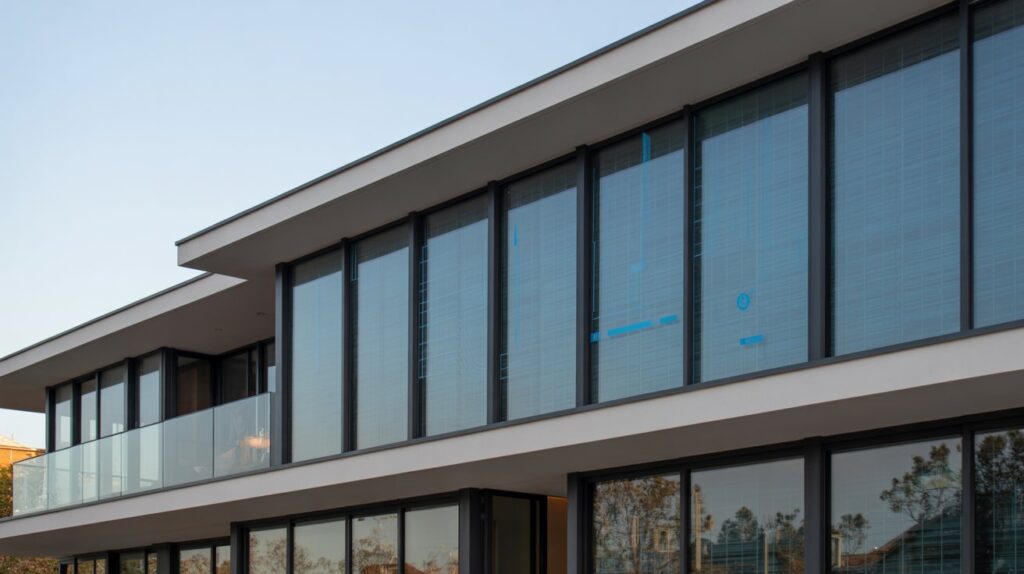Smart windows are gaining popularity in the architecture and interior design. The smart windows dynamically respond to changing environmental conditions unlike the traditional windows, which are fixed with respect to transmitting light and heat, making them more comfortable, energy saving, and pleasing to the eyes.
An smart window functions with the help of sophisticated materials such as electrochromic, thermochromic or photochromic glass and films. These materials either alter tint or transparency when faced with electricity, temperatures or light intensity. Due to that, smart windows are able to minimize glare, eliminate UV rays, regulate heat gain or loss as well as enhance privacy without the use of curtains or blinds.
How They Function
The most common type of these are electrochromic smart windows, in which a small coating is deposited on the glass, which when a small voltage is applied, will vary the amount of light or heat that is transmitted through. Unlike thermochromic glass, thermochromic glass is a passive temperature sensor, becoming opaque or tinted when temperatures become hot, and returning to its normal state when things get colder.
There are smart windows which change automatically and are sensor-operated by light intensity or heat sensor, or are programmed through apps or building automation systems. This type of adaptability implies that the glass will be in real-time responsive and even predictive to outside or inside building conditions.
Important Aspects
- One of the biggest advantages is energy efficiency. Smart windows lower the air conditioning requirements during hot seasons, as they reflect solar heat and during colder seasons, they can be used to Trapp warmth. This translates to reduced costs of heating, ventilation, and air-conditioning (HVAC). In most installations, the users claim to see significant reduction on their electricity bills.
- There is an enhancement of comfort and indoor environment. Smart windows facilitate minimization of glare, indoor temperatures that are relatively more stable and natural daylight that is not harsh like direct sun rays. These improvements can be used in workspaces, schools or homes to create less strain on the eyes, as well as elevate mood and make the occupants feel more comfortable.
- Privacy is another benefit. Windows can be turned opaque or even coloured with a flick of a switch or through automation and provide immediate privacy, solving the problem of privacy in meeting rooms, bathrooms, or residential homes that face high-traffic roads. And all this in the absence of curtains or blinds to mess up the aesthetic.
- The interior furnishings are also guarded by Smart windows. Because most smart glass materials are effective in filtering UV rays most furniture, flooring and artwork will not fade as time goes by caused by sun damage. This aids in storing objects and saves the expenses of substituting.
Design & Aesthetic Advantages
Architects and designers love smart windows to build sleek and minimalistic facades, extensive glass surfaces, and open-plan without compromising the comfort and privacy. With the ability of the glass to become adaptable, the buildings are able to have a higher amount of glass work without the negative effects of the fixed glare or overheating.
Also, intelligent windows do away with or minimize the use of external shading systems or heavy curtains, which can conceal a view, necessitate upkeep or lead to discontinuities. The possibility to switch transparency, change tint or switch between the states provide the visual dynamism to interiors and exteriors.
Final Words
Smart windows are symbolic of the intersection of technology, design and sustainability. They provide dynamic control of light and heat reducing energy expenses, increasing comfort, privacy, and interiors preservation, as well as allowing more elegant and modern architectural expression.
Smart windows are a powerful choice that can be considered by households or businesses that want to transform their spaces and make them more adaptive and efficient. They are not merely a fad, but are an indication of what is yet to come of how we design our living and work environments.

